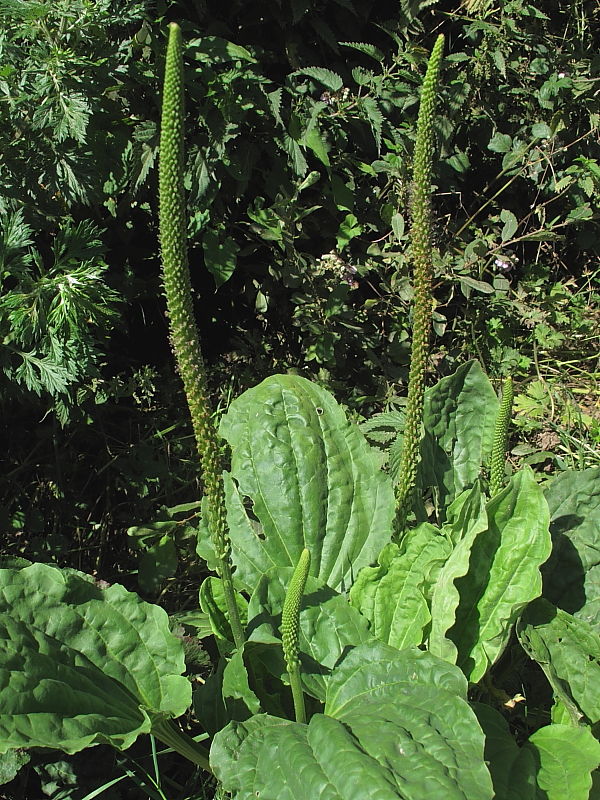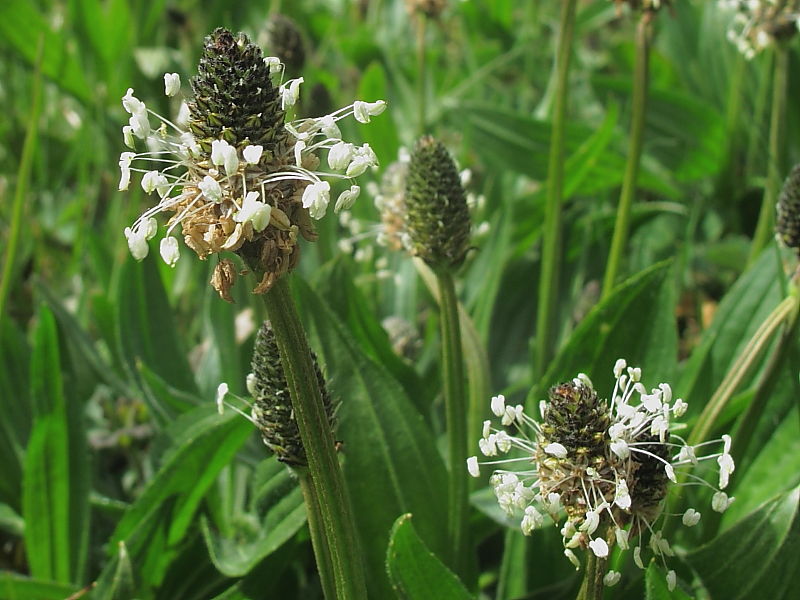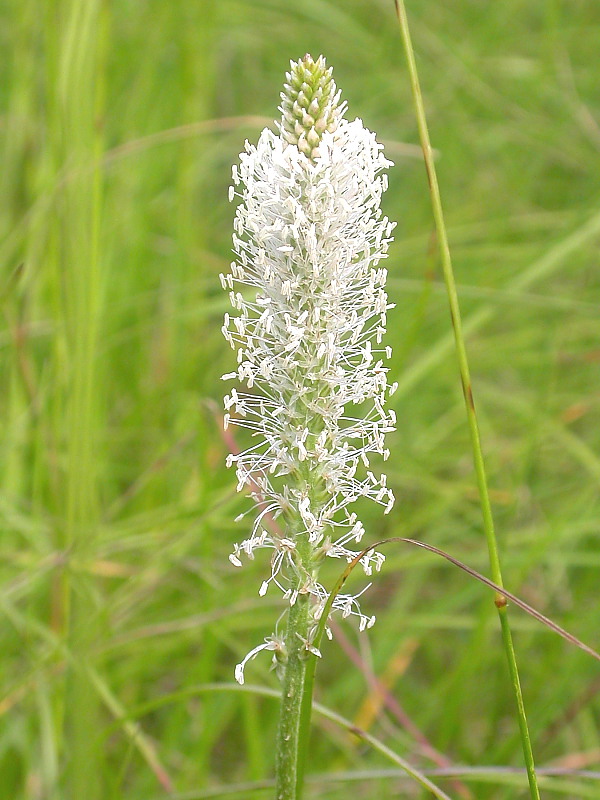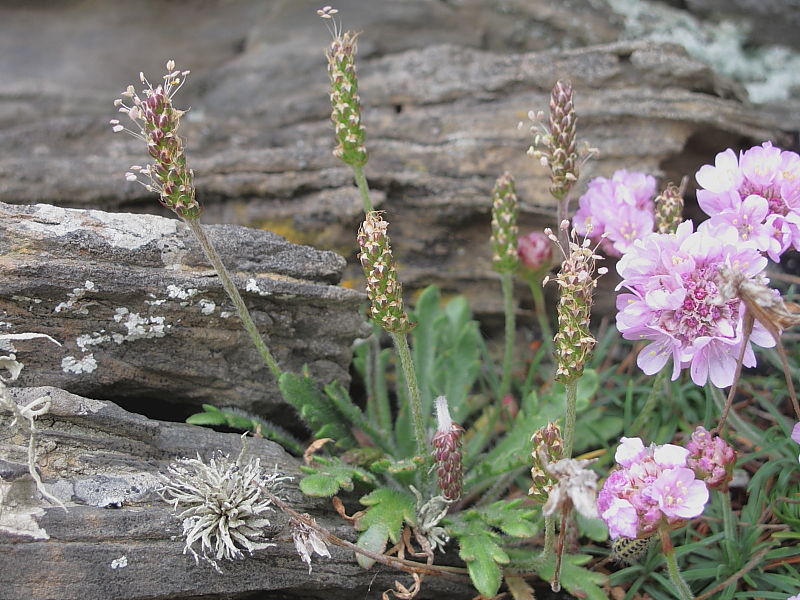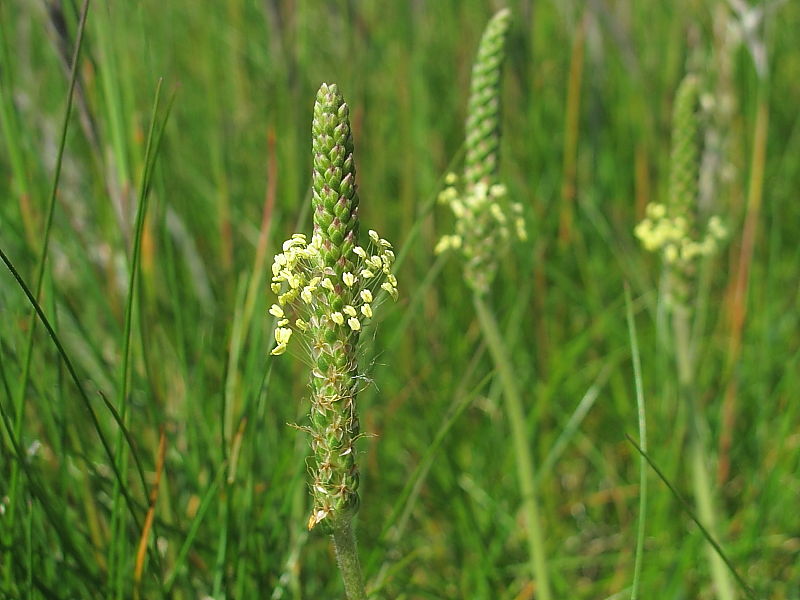Introduction to British Plantains
There are six members of the Plantain family (Plantaginaceae) in Britain.
This page looks at the five Plantains (Plantago) which are land plants whereas the sixth member of the family, Shoreweed (Littorella uniflora) is more or less aquatic.
The five Plantago Plantains all have leaves in a basal rosette and flowers in dense spikes on leafless stalks.
The plantains are important foodplants for caterpillars of a number of different species of butterfly and moth and these include Glanville Fritillary and Painted Lady butterflies.
This page looks at British Plantains but the wild flower gallery has images of other wild flowers in Britain shown by family.
Greater Plantain (Plantago major)
Found throughout the British Isles, Greater Plantain is common on disturbed ground especially places that get trodden as it withstands trampling rather well.
It is a robust plant and has broad oval leaves with many veins and a petiole (leaf-stalk) as long as the leaves.
The inflorescence stalk (stalk leading up to the flowerhead) is not furrowed and about 10-15cm.
The flowers are a dirty yellowish white with short yellow stamens.
Greater Plantain flowers from May to August.
Ribwort Plantain (Plantago lanceolata)
Ribwort Plantain is probably the most familiar plantain as it’s found throughout the UK on grasslands, wastelands and roadsides.
Its leaves, all in a basal rosette, are narrowly ovate and are entire or may be weakly toothed with roughly parallel veins and a short petiole or leaf-stalk.
The inflorescence stalk has silky hairs, is deeply furrowed and can be as much as 45cm tall.
The flowerhead is roughly oblong with many small, brownish flowers with long, white stamens.
Ribwort Plantain flowers from April to October.
Hoary Plantain (Plantago media)
Widespread in England but rare in the south west, Wales and Scotland, it’s found in meadows and pastures and on rough grassland usually on calcareous soils. It’s pollinated by insects whereas the other Plantains are wind-pollinated.
The leaves are ovate, 5-9 ribbed and sessile (without a stalk) or short-stalked. The leaves are greyish and downy.
The inflorescence stalk is longer than the leaves, up to 30cm, and is not furrowed.
The flowers are whitish with pink stamens on purple stalks although the one in the image is very pale.
Hoary Plantain flowers from May to August.
Buck’s-horn Plantain (Plantago coronopus)
Found all around the coasts of Britain and inland in the south and east of England, it’s common on rocks, sea cliffs and grasslands near the sea.
The leaves are very variable and can be entire, toothed or, most often, deeply divided. The leaves form flat rosettes but some are erect.
The inflorescence stalk is up to 20cm with brownish flowers and yellow stamens.
Buck’s-horn Plantain flowers from May to July.
Sea Plantain (Plantago maritima)
Found all around the coast of Britian and inland in NW Scotland, Sea Plantain is a hairless perennial plant with a woody base. It’s seen in salt marshes and on sea cliffs, rock ledges and scree.
The leaves are narrow and entire, or only partly toothed, unveined and fleshy often standing erect. The first image on this page shows the leaves more clearly.
The inflorescence stalk is up to 30cm tall and unfurrowed.
The flowers are brownish with darker midribs and pale yellow stamens.
Sea Plantain flowers from June to August.
